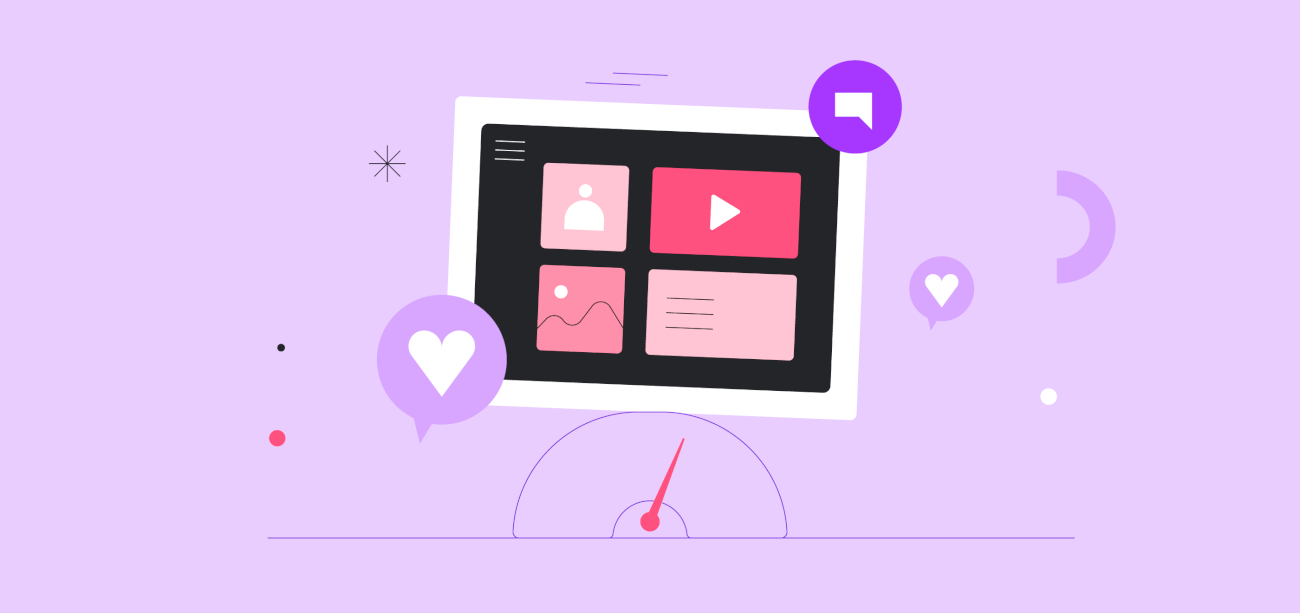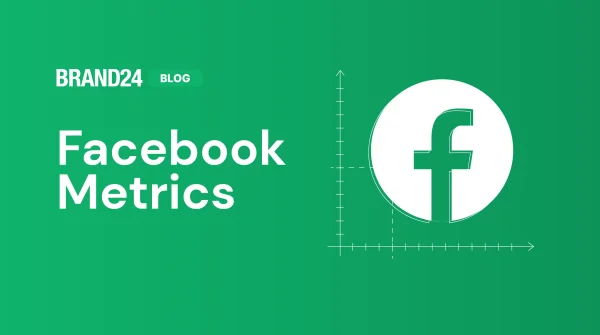Guide to Social Selling with Tim Hughes – Podcast
Did you know that according to some research 22% of B2B Sales People in the U. S. will lose their jobs to E-commerce by 2020? Technology-empowered, social media enthusiastic customers are transforming the world, economy and business landscape and Social Selling and Social Listening seem to take the front line in this change.
I have recently had a quick chat with Tim Hughes, Social Selling Pioneer and Innovator and an avid Tech Blogger to find out more about this change. Tim has recently published a book “Social Selling – Techniques to Influence Buyers and Changemakers” and I could not have resisted to ask him more about it too.
Have a listen to the “5 Question Interview with an Expert”, the 1st Episode of Brand24 Podcast or keep reading for a juicy, abridged transcription of what we have discussed.
Why anyone who does business today should take social selling seriously?
The reason for that is that social selling is the new way, is the way that we now need to work. So, if you think about what’s happened, the change that’s taking place with mobile. When I worked in London and as I get the train into London, most people are sitting there using their mobiles. And they’re doing that, they’re watching TV programs; they’re surfing the Internet; they’re on email; they’re on social media, and our customers are on social media. And so, what happens – what people are doing where it’s – if you go back to where I started selling 27 years ago. To buy anything, you had to have a conversation with a sales person, it’s the only way that you could buy something.
Now, what happens is that you can actually go onto the Internet and you can avoid talking to sales people. And I mean, if you think about something simplistic like buying a car; 20, 30 years ago, you had to buy it from a sales person. Now, if you want to buy a car, you can go onto the Internet, you can configure it; you can do everything. The only reason why in the UK, I have to talk to a car salesman, is that I want to do a part exchange, which is I want them to buy my old car off me. And I expect to try and get a little bit more discount out of a sales person.
And I think that’s the case, certainly what we’re seeing, even in large transaction values, of deals. People are actually able to go on to YouTube to watch demos. They’re able to get white download, white papers. They’re able to access all kinds of content, and so they don’t need to talk to sales people. So, the problem that sales people have, is research shows, that people are basically going online and spending anything like 45% to 85% of the time of the sale, actually online, and not talking to them. So that means that they’ve actually lost all of that time in terms of the conversation and their ability to influence.
And one of the things that they could do, if they wanted to. Is actually use social to enable them to step up into that gap, to spot the buyers and actually engage with them, while their online; before they’ve actually come up with their shortlist or have actually made decisions. That’s why people need to get into social; it’s where your customers are.
Your book “Social Selling – Techniques to Influence Buyers and Changemakers” is ready to be pre-ordered on Amazon. What Insight do you share in the book?
What Matt and I did when we started writing the book, was to try and create a playbook. So really a manual that people can sit down and work through. Because a lot of people, social doesn’t come natural to them. Or if social does come natural to them, using it from – in a business context, doesn’t come natural to them. And what we wanted to do, is actually, teach people how to use social. And give them an ability to – of a way of working through chapter by chapter. To enable them – to understand…there’s a lot of talk about getting on LinkedIn and Twitter. But really it was about, not just about setting up your profile, it was about how you can use these tools proactively, to enable you to find opportunities, leads, and actually close deals. So, we actually talk about how people can create community, how they can create their own influence, which tools to use. For example, if you’re going for a meeting, with somebody, now you can go online and actually check them out.
The same as people that you’re going to the meeting to will actually check you out. And how is it that we… talk about this thing in the book, about the relationship funnel. Which is how can you use social to proactively, go out and find people in the accounts that you’re selling to. Engage with them, even before they’re thinking of actually buying, and actually trying to close them down and selling them something. And doing that all without being weird.
Because sometimes, if you go online, some people think that social selling is just normal selling through social. And it’s not that, it’s a whole different way of selling and approaching people. Similar to what you did, which is the fact that when you found me, you approached me in a particular way. You didn’t immediately try and sell me something, and just working with people. You know, in the old days, you would have phone someone and immediately gone into this – you know, you got kind of 20 seconds, in which to make your pitch. You could have actually, already followed somebody; you could have liked what they’ve done. You could have read their blog. You could have told them that you think that they’ve got a great blog. So the first time you actually contact them, they’ll go, “oh yeah, I know you already, your Tim Hughes from Social. Yeah, okay, great, let’s have a conversation.” And so, you do, you can nurture people on social that you actually want to contact and work with, ahead of actually going for that call.
Now, we’re not saying that’s there’s never going to be a face-to-face meeting or a Skype meeting like we’re having today. But what we are saying, is that you can use social – if you think about social as itself. If you want to contact me on social, there’s no secretary or executive assistant, or voice mail getting in the way. You can contact me directly.
Are there any practical real life examples, from the business, in your book?
Yeah, the book is pretty full of anecdotes around experience that Matt and I have. Matt has two small children, so he actually uses – he talks about – he wrote the chapter on influence. And he talks about the v-bloggers and how his children don’t watch television anymore, they just watch YouTube.
And how these people have created an influence from nothing. And we both believe that everybody could do that. Now, we’re not saying that everybody can be thought-leaders. But what people can do… as a sales person, when I was selling into a particular territory, I wanted to make sure that owned that territory. And I wanted always wanted to get to the point where people would come to me. And what we talk about in the book, is how you can do that, through social. And using social in as way, where you’re actually getting, what we call, “inbound.” So for example, I’ve had one of the top five banks in the UK contact me through social, saying I want you to come and present to the board. And … having a LinkedIn profile and a Twitter profile, you should be able to build enough influence, that you’re getting that as a sales person. And every inbound you get, that’s a cold call you don’t have to make.
Why is Social Listening important?
From people listening, they’ll have all kinds of experiences, in terms of social. The first thing that I always recommend people do, when they first get into social, is not to start tweeting or posting, is actually to listen. And a lot of people, especially some of the sales people I deal with, who haven’t ever grown up with social, are actually quite scared of it. And really what they need to do, is actually sit back and listen to what other people are doing. And what you do is, quite early on, is I get all of my sales people to…they should be listening to their customers, both of at the high level – so what the company is saying, and they also should be going out to social, and finding people on Twitter and LinkedIn and connect with them. So it’s very easy to follow people on twitter without any great; you could listen to what anybody is saying.
But you should be in a position where you’re linking or connecting with or finding a reason to connect with people on LinkedIn, but you’re in effect wanting to sell to. It doesn’t mean that you actually need to go to them and say… so, we talk about this thing in the book, about how – when you think about a standard networking event you’re going to go to – there’re drinks in the evening and you can go and meet people. And the moment you walk in, you don’t stand there and go “Hi, I’m Tim and I sell these products and you can get 30% off.” Most people would kind of look at you and think you were weird and then go back to doing what they were doing, and then probably ignore you for the rest of the night. And it’s no different from life on social.
But, if you think about if you were going for drinks, what do you do. you would walk in, you look around, you look for people you knew. If you didn’t know anybody, you would go and get a drink, and then you go and find a group of people that kind of looked interesting, and you go and stand there The first thing you wouldn’t do, is go…you might introduce yourself. But you wouldn’t actually go there and “Hey, I’m Tim and I do this… and you can get 30% off.” You’d probably just stand there and listen, and listen to what they were talking about. And you would nod and maybe interject or something like that. And that’s really what you do in the online world. Is you would do exactly the same, you would listen to what people are saying.
If people what to contact me, what I kind of expect, that you would have done some background reading on me, about what I do, what I’m interested in. I would have expected you to have probably, read my blogs or listen to a webcast or two. And at that point, you could say, “Tim, I found that really interesting”, or “you wrote this, and what does that mean?”. Similar to what you just have done in asking question saying “you have done these things”. Which is…you know, everybody likes to be… we’re all flattered to think that somebody is interested in you.
And if you think, the amount of information I post about myself online… I was out last night, and someone came up to me and said, “I thought you had a fantastic time on your holiday in Japan.” And they said, “I was captivated, every day I wanted to see where else you we’re going and what you were doing. It looks a fantastic country.” Now, they did that because they were watching me post pictures of my holiday in Japan.
And they were listening to what I was saying. And of course, at that point, I’m flattered that someone’s interested in me, and I immediately would give them time… in terms of talking. But you don’t actually need to sell, you can go in and immediately have a… what you’re trying to do is, you build up that relationship. And LinkedIn is a great platform for you to listen and Twitter is a great platform for you to listen, and then build up that relationship.
What is the hardest part of Social Selling?
Well, there’s two difficulties. One is that we have a lot of people that don’t believe it, and even when you talk to them and say, “Okay, so, just tell me how you’re going to buy something?” They say well, “we just go to Google and…” and there seems to be this complete denial, that while all of us are going to Google, and whenever we buy something, we suddenly think, I’m going to get… even if I’m going to buy a new pair of shoes, and even we can probably go the shop and actually try them on. We probably go to Google and actually look at the types of shoes that are available. If you think about, certainly, people that are in their teens or their 20s. you know, they’re probably going to the v-bloggers and listening to what they’re saying. And a lot of people just seem to, even though they’re doing it, they don’t believe that their customers are doing it. So, social has changed and the Internet has changed everything. And there’s still people that really don’t understand, or don’t recognize the fact that there’s been a change.
And the second thing is that what happens, what I see a lot, is people say, well… you know when – that fact that we’ve all use Amazon and we’ve never been on a training course to use Amazon. We have just generally, have learned it. A lot of people seem to think that Twitter and LinkedIn are like that. And in fact, you actually need to train people who to use Twitter and LinkedIn; you need to explain to them what best practices is. And certainly, a lot that I deal with, they’re actually scared to post, because they don’t want to get it wrong. And if you’re a brand or a company, the last thing you want is your employees to be posting the wrong things. So, it’s really key that you actually train people.
And I actually do training courses where I actually sit there and go, “this is how you post a Tweet.” “This is what a good Tweet looks like.” Now, we may go into a conversation about how to be found on social media, which is how you use hashtags. But there are a lot of people that actually are scared by it, and you do need… training is so key for people.
You can follow Tim on his blog “Social Selling Network”, Linkedin (Tim Hughes) and Twitter (@Timothy_Hughes) and pre-order his book “Social Selling – Techniques to Influence Buyers and Changemakers” on Amazon.

![A Complete Guide to AI Social Media Analysis [2024]](https://brand24.com/blog/wp-content/uploads/2020/03/750x300_x2-1.png)
![What is AI Social Media Monitoring? Definition [Guide]](https://brand24.com/blog/wp-content/uploads/2022/09/What-is-Social-Media-Monitoring.png)


